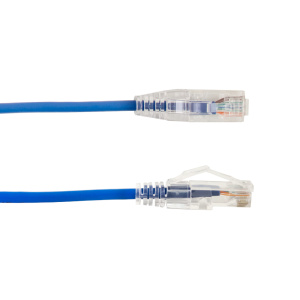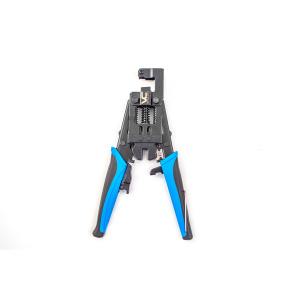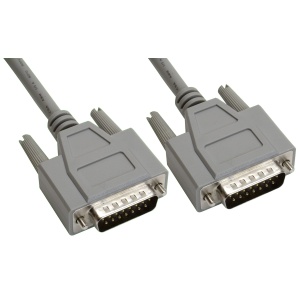Selecting the right type of high-temperature cable for your industrial needs can seem like a daunting task. The multitude of options can leave you spinning, but fret not! This comprehensive guide is here to walk you through the process of how to choose the right type of high-temp cable for your industrial needs.
SEO Meta Description: Unravel the complexity of high-temp cable selection for your industry with this comprehensive guide on how to choose the right type of high-temp cable for your industrial needs. Navigate the world of temperature ratings, insulations, applications, and more!
Understanding High-Temp Cables
Before we dive into how to choose, it’s essential to understand what we’re dealing with. What is a high-temperature cable and why is it so crucial in an industrial setting?
What is a High-Temp Cable?
A high-temperature (high-temp) cable is a specialized type of wiring designed to perform efficiently under extreme temperature conditions. It’s the superstar of the cable world, with an ability to endure high temperature environments where ordinary cables would crumble under the heat.
Why High-Temp Cables in Industrial Settings?
Industries often deal with high temperatures, whether it’s an element of the manufacturing process or as a byproduct of machinery and equipment. Ordinary cables can’t withstand these high temperatures, leading to insulation breakdown, short circuits, or even fires. High-temp cables mitigate these risks, ensuring seamless industrial operations.
How to Choose the Right Type of High-Temp Cable for Your Industrial Needs
Now that we have a basic understanding of high-temp cables, let’s delve into the factors you need to consider when choosing the right type for your industrial needs.
Temperature Rating
The temperature rating is arguably the most crucial factor in choosing a high-temp cable. Cables are designed to operate within specific temperature ranges. It’s vital to match the cable’s temperature rating with the environment’s average and peak temperatures it will be exposed to.
Cable Insulation
Different high-temp cables come with different insulation types, each with its unique set of properties. These range from materials like Teflon (PTFE), silicone rubber, or mica, among others. Your choice of insulation can significantly impact the cable’s performance and longevity in a high-temperature environment.
Cable Size and Length
The size and length of your high-temp cable can affect its capacity to carry current without overheating. The wire gauge (diameter) and length need to be adequately calculated based on the current load and voltage drop permissible for your industrial operation.
Applying Your High-Temp Cable Knowledge
Having laid the groundwork, let’s delve into applying this knowledge to various industrial scenarios. It’s one thing to know the factors, but how do we put it all together?
High-Temp Cables in the Steel Industry
In the steel industry, high temperatures are a constant. From furnaces to smelting operations, heat is everywhere. In this case, cables with higher temperature ratings and robust insulation like ceramic or mica would be the most suitable choice.
High-Temp Cables in Food Processing
Food processing units often utilize high-temp cables for equipment such as ovens, heaters, and other cooking appliances. Silicone-insulated cables are a popular choice in this industry due to their flexibility and food-safe properties.
High-Temp Cables in Power Plants
Power plants are another sector where high-temp cables find extensive use, particularly in areas such as boilers and steam turbines. High-temperature cables with superior insulation materials that resist thermal breakdown, like PTFE or ceramic, are generally preferred in these environments.
Recognizing High-Quality High-Temp Cables
When it comes to choosing high-temp cables, quality is paramount. But what markers indicate a high-quality high-temp cable? How do you avoid falling prey to inferior cables that might compromise your operations?
Cable Construction
A high-quality high-temp cable is all about construction. It starts from the core conductor material, which should be of high purity to ensure maximum conductivity and heat resistance. The insulation layer should be robust, and the outer jacket should be capable of withstanding the environmental factors it’s exposed to.
Manufacturer Reputation
The reputation of the cable manufacturer can tell you a lot about the quality of their products. Look for manufacturers with a track record of producing high-quality, reliable high-temp cables.
Compliance with Industry Standards
High-temp cables that comply with industry standards and certifications are generally a safe bet. These standards, like UL, CSA, or IEC, ensure the cable has been tested and deemed safe for use in high-temperature environments.
Safety Precautions with High-Temp Cables
As with all things electrical, safety precautions are a must when dealing with high-temp cables. It’s not just about selecting the right cable; it’s about ensuring safe installation and maintenance.
Correct Installation
Proper installation of high-temp cables is crucial to prevent any potential hazards. This includes aspects like routing, securing, and grounding the cable.
Regular Maintenance
Regular maintenance of your high-temp cables can help detect any potential issues before they become a hazard. This includes periodic visual inspections for any signs of wear, tear, or insulation breakdown.
Emergency Protocols
Despite all precautions, emergencies can happen. It’s essential to have a clear protocol in place, including circuit breakers and fire extinguishers, to respond to any potential electrical mishaps.
FAQs
- What is a high-temp cable? A high-temp cable is a special type of wire designed to perform efficiently under extreme temperature conditions.
- Why are high-temp cables used in industrial settings? High-temp cables are used in industrial settings to withstand high temperatures that regular cables cannot, thus preventing potential hazards like insulation breakdown, short circuits, or fires.
- How do I choose the right high-temp cable for my industrial needs? Consider factors like the cable’s temperature rating, insulation type, and size based on your specific industrial operations.
- What are some common applications of high-temp cables in industries? High-temp cables are commonly used in industries like steel production, food processing, and power plants where high temperatures are present.
- What indicates a high-quality high-temp cable? High-quality high-temp cables are characterized by excellent construction, manufacturer reputation, and compliance with industry standards.
- What safety precautions should be taken with high-temp cables? Safety precautions include correct installation, regular maintenance, and clear emergency protocols.
In Conclusion
Choosing the right type of high-temp cable for your industrial needs doesn’t have to be a herculean task. With an understanding of the cable’s purpose, the considerations involved in selection, and the need for safety, you can make an informed decision that best suits your industrial operations. Here’s to a safer and more efficient industry, thanks to high-temp cables!












